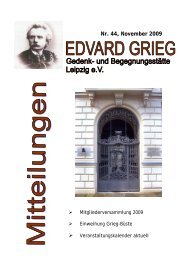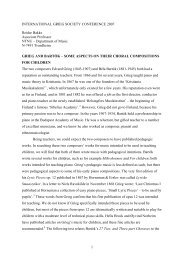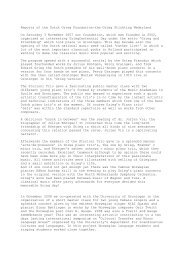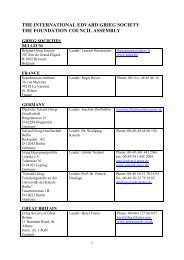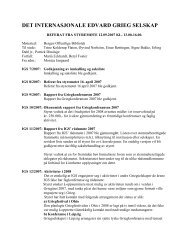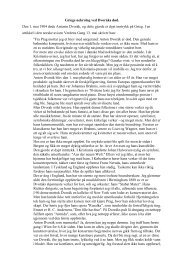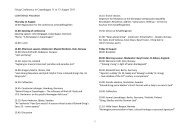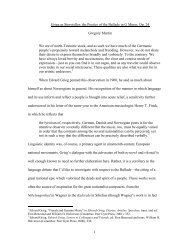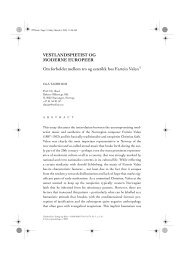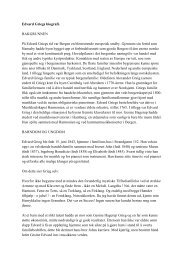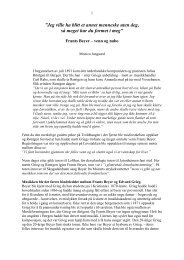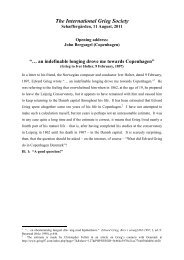Gregory Martin - paper 2009 - Grieg Society
Gregory Martin - paper 2009 - Grieg Society
Gregory Martin - paper 2009 - Grieg Society
Create successful ePaper yourself
Turn your PDF publications into a flip-book with our unique Google optimized e-Paper software.
I have long felt that in his concerto – as well as in the three violin sonatas – <strong>Grieg</strong>'s efforts to build alarge structure take on the shape of that most <strong>Grieg</strong>ian of designs: ternary form. In other words, these3-movement pieces are macrocosmic representatives of his approach to ABA layout. He wasobviously very comfortable in this form, and it will be argued that the structural choices he madewhen working in this capacity had greater implications when he turned to multi-movementcomposition. That is, the first and third movements act as something of parallel statements, contrastedby the second movement's affective differences, though while often utilizing aspects of the outermovements' materials. This is not too unlike the manner in which Liszt extended a broad sonatadesign across the different movements of his B minor sonata (and indeed, given the nature of <strong>Grieg</strong>'srelationship with Liszt it is not too much to suppose that this hadn't occurred to <strong>Grieg</strong> himself).Let's first briefly examine the relationship between the outer movements and the second movement.The piano enters in the outer two almost immediately with bravura cadenza-like passages, while in themiddle movement the orchestra is given the entire exposition. When the piano does enter, though, it iswith a descending cascade and a consequent ecstatic motion upward designed to echo the traversal ofthe keyboard demonstrated in the piano entrance of the outer movements. The link is strengthenedwhen the melodic and harmonic parallels are laid bare, as in Ex. 1:



